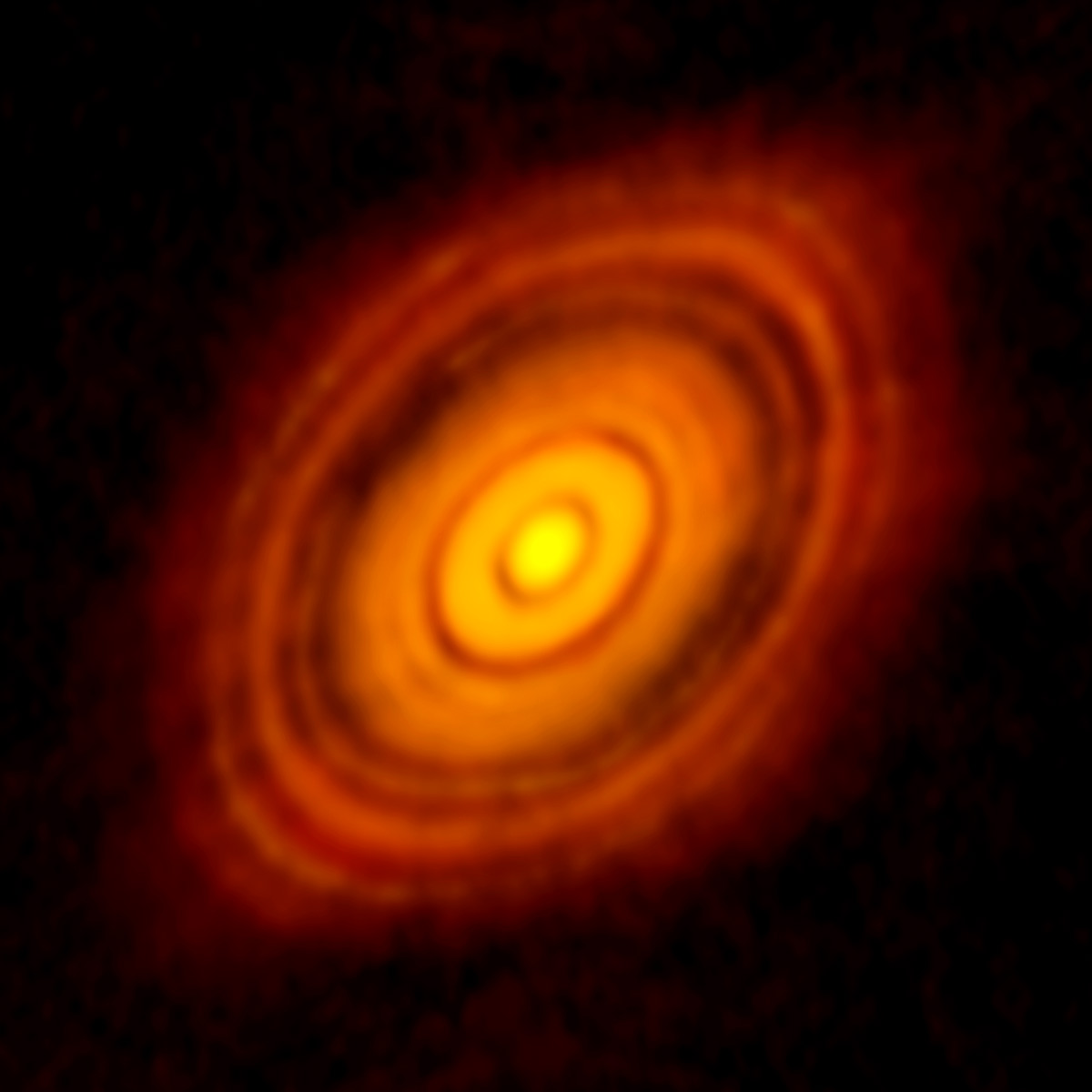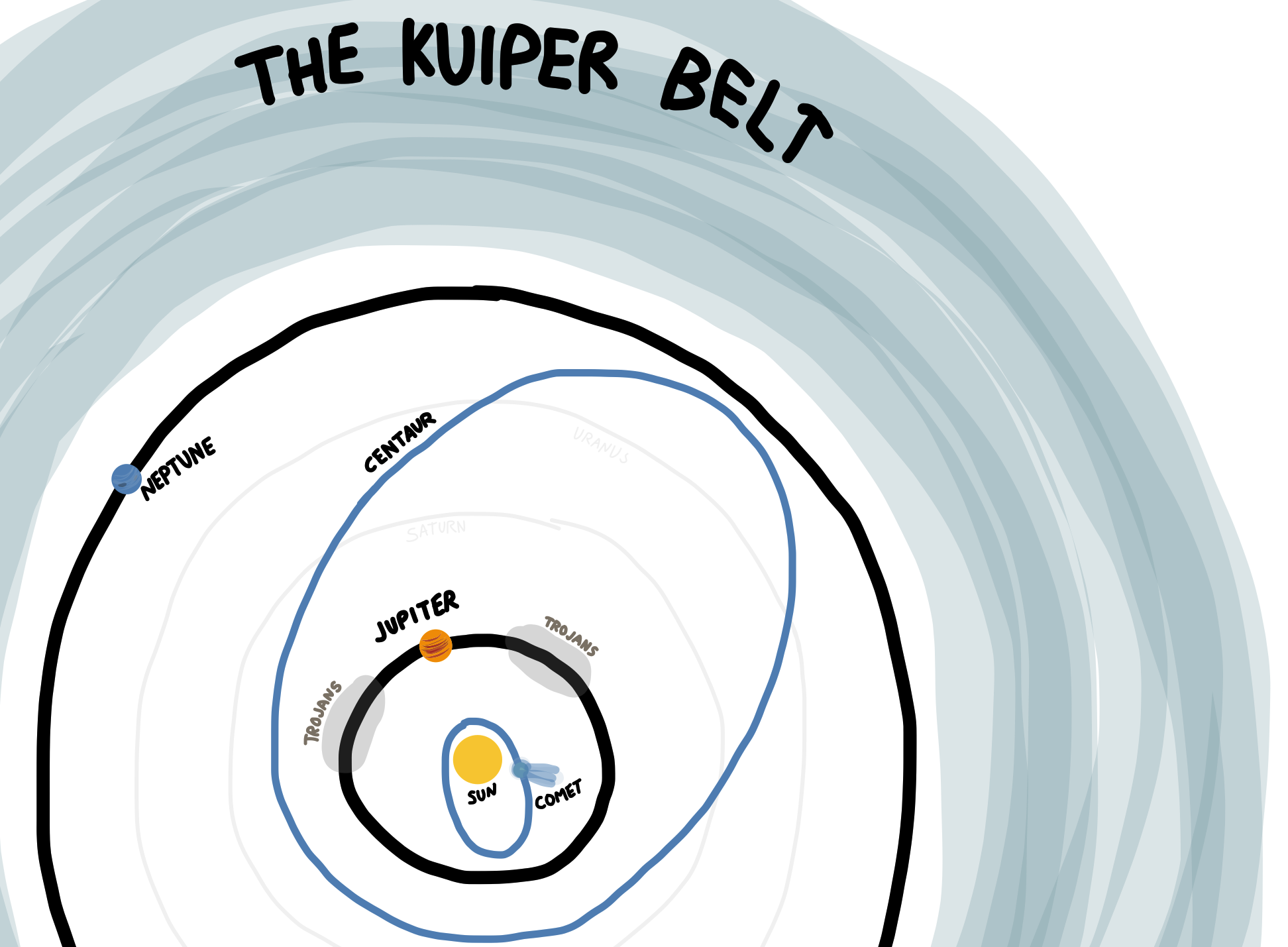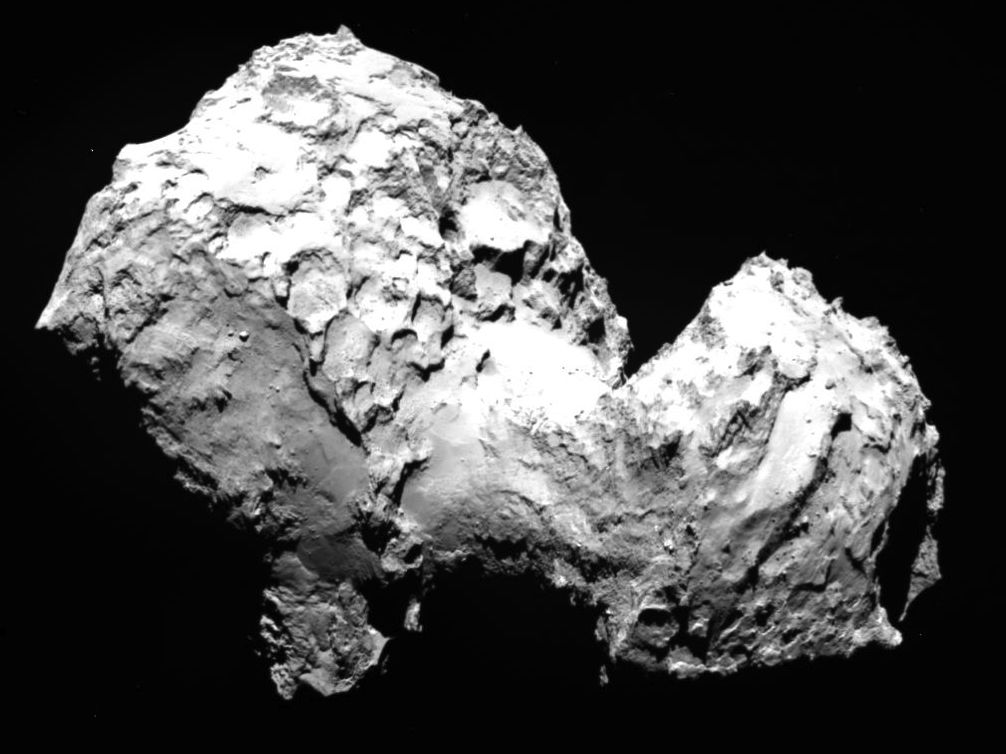Pedro Lacerda's homepage
Cometary Science

Planetary systems form around newly-born stars, in discs of gas and dust. The first macroscopic building blocks of planets are called planetesimals — their formation remains mysterious and is the subject of intense and exciting research.
Our solar system is an adult planetary system that formed 4.5 billion years ago. There are, however, thousands of remnant planetesimals that remain preserved in the region beyond Neptune, in the Kuiper belt and Oort cloud. Far from the Sun and at temperatures below 50 degrees Kelvin, these relic objects convey in their physical and chemical properties many clues about how planetesimals are formed and about the origin of our planetary system.

When Kuiper belt and Oort cloud objects are perturbed into the inner solar system they heat up, their icy surfaces begin to sublimate, and they become comets. The study of comets and Kuiper belt objects is our best chance to learn about how the solar system formed and how planetesimals are born around stars. Comets also probably carry prebiotic molecules that may have helped seed life on Earth.
This is the best time to study comets. The Rosetta spacecraft has just finished exploring comet 67P/Churyumov-Gerasimenko. Rosetta followed the comet along its orbit (see also this) and deployed a lander that came to rest on the comet nucleus and performed measurements on the surface; these data will revolutionise our understanding of cometary nuclei. The scientific results to come from Rosetta will rewrite the books on cometary and planetesimal science for the next 50 years.

The MPS was directly involved in the Rosetta mission, leading five of the instruments on-board the spacecraft.
During my time at MPS, I led a research group to study comets and planetesimal formation using data from Rosetta and ground-based telescopes. One main question guided our research:
The Origin of Comets
Driving question: Where and how did comets form?
Comet nuclei reach the inner solar system from distant repositories in the Kuiper belt and Oort cloud. Near the sun, comets begin to sublimate, ejecting copious amounts of gas and dust into a coma that enshrouds the nuclei and block them from detailed analysis. For this reason, very little is known about the properties of comet nuclei. This project aims at investigating the properties of comet nuclei with the goal of understanding how comets form. The Rosetta spacecraft will for the first time land on a comet, providing unique and very detailed information on the properties of the nucleus. We will use data from Rosetta, together with observations of comets, Centaurs and small Kuiper belt objects obtained using ground based telescopes, to investigate the properties of comet nuclei and set constraints on their origin.